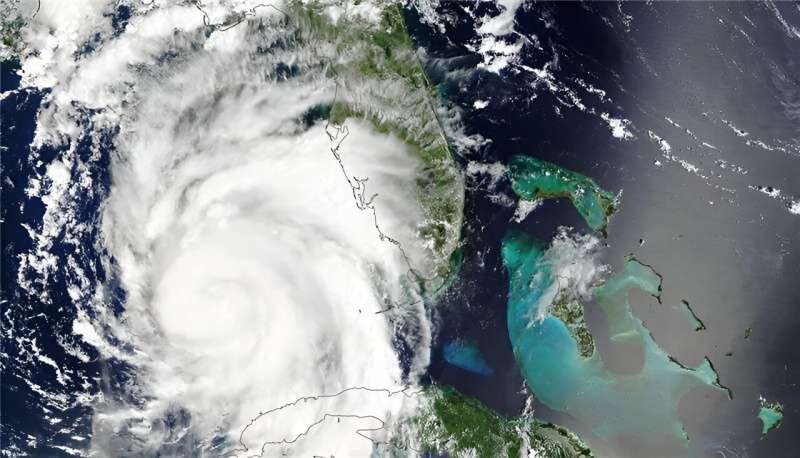This article has been reviewed according to Science X's editorial process and policies. Editors have highlighted the following attributes while ensuring the content's credibility:
fact-checked
trusted source
proofread
Research team releases new AI model for weather and climate applications

Working together, NASA and IBM Research have developed a new artificial intelligence model to support a variety of weather and climate applications. The new model—known as the Privthi-weather-climate foundational model—uses artificial intelligence (AI) in ways that could vastly improve the resolution we'll be able to get, opening the door to better regional and local weather and climate models.
Foundational models are large-scale, base models that are trained on large, unlabeled datasets and can be fine-tuned for a variety of applications. The Privthi-weather-climate model is trained on a broad set of data—in this case NASA data from NASA's Modern-Era Retrospective analysis for Research and Applications (MERRA-2)—and then makes use of AI learning abilities to apply patterns gleaned from the initial data across a broad range of additional scenarios.
"Advancing NASA's Earth science for the benefit of humanity means delivering actionable science in ways that are useful to people, organizations, and communities. The rapid changes we're witnessing on our home planet demand this strategy to meet the urgency of the moment," said Karen St. Germain, director of the Earth Science Division of NASA's Science Mission Directorate. "The NASA foundation model will help us produce a tool that people can use: weather, seasonal and climate projections to help inform decisions on how to prepare, respond and mitigate."
With the Privthi-weather-climate model, researchers will be able to support many different climate applications that can be used throughout the science community. These applications include detecting and predicting severe weather patterns or natural disasters, creating targeted forecasts based on localized observations, improving spatial resolution on global climate simulations down to regional levels, and improving the representation of how physical processes are included in weather and climate models.
"These transformative AI models are reshaping data accessibility by significantly lowering the barrier of entry to using NASA's scientific data," said Kevin Murphy, NASA's chief science data officer, Science Mission Directorate at NASA Headquarters. "Our open approach to sharing these models invites the global community to explore and harness the capabilities we've cultivated, ensuring that NASA's investment enriches and benefits all."
Privthi-weather-climate was developed through an open collaboration with IBM Research, Oak Ridge National Laboratory, and NASA, including the agency's Interagency Implementation and Advanced Concepts Team (IMPACT) at Marshall Space Flight Center in Huntsville, Alabama.
Privthi-weather-climate can capture the complex dynamics of atmospheric physics even when there is missing information thanks to the flexibility of the model's architecture. This foundational model for weather and climate can scale to both global and regional areas without compromising resolution.
"This model is part of our overall strategy to develop a family of AI foundation models to support NASA's science mission goals," said Rahul Ramachandran, who leads IMPACT at Marshall. "These models will augment our capabilities to draw insights from our vast archives of Earth observations."
Privthi-weather-climate is part of a larger model family—the Privthi family—that includes models trained on NASA's Harmonized LandSat and Sentinel-2 data. The latest model serves as an open collaboration in line with NASA's open science principles to make all data accessible and usable by communities everywhere. It will be released later this year on Hugging Face, a machine learning and data science platform that helps users build, deploy, and train machine learning models.
"The development of the NASA foundation model for weather and climate is an important step towards the democratization of NASA's science and observation mission," said Tsendgar Lee, program manager for NASA's Research and Analysis Weather Focus Area, High-End Computing Program, and Data for Operation and Assessment. "We will continue developing new technology for climate scenario analysis and decision making."
Along with IMPACT and IBM Research, development of Privthi-weather-climate featured significant contributions from NASA's Office of the Chief Science Data Officer, NASA's Global Modeling and Assimilation Office at Goddard Space Flight Center, Oak Ridge National Laboratory, the University of Alabama in Huntsville, Colorado State University, and Stanford University.
More information: Learn more about Earth data and previous Privthi models: www.earthdata.nasa.gov/news/im … hls-foundation-model
Provided by NASA





















